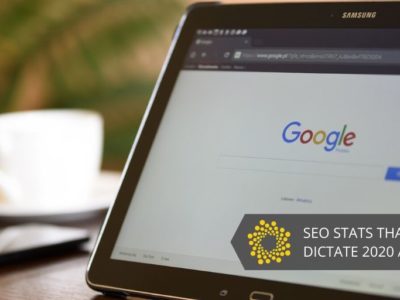Checking for updates on Facebook while waiting for a cab, searching for nearby restaurants when deciding what to eat, looking up a product or service you saw during a commercial break, scanning through reviews of a pair of sneakers—these constantly-occurring user actions are referred to as micro-moments.
And of course, the brilliant minds at Google are quick to notice how these micro-moments can be leveraged. The concept of micro-moment marketing was first introduced by Google’s marketing team, Think With Google, a few years ago. This marketing model refers to the decision-making points where a buyer looks to an online device to help act on a need—to do something, to watch something, to buy something, to discover something, etc.
Today’s consumer expectations are as sophisticated as ever, which calls for new ways to further understand their needs. Micro-moments are comprised of four key moments that really matter. These instances invite and guide marketers to strike while the iron is hot.
-
I-want-to-know moments: When a user is researching or looking for information but is not necessarily ready to purchase.
-
I-want-to-go moments: When a user is entering more specific keyword searches for local businesses (e.g., “near me” “in the city”) or when the user is considering to buy locally.
-
I-want-to-do moments: When a user looks to their device for new ideas while performing a task or when they need help completing a task.
-
I-want-to-buy moments: When a user is in purchase mode and uses their phone for help in deciding what to buy and how to buy it.
Basically, these are intent-rich moments that allow marketers to anticipate consumer needs and design their marketing tactics around it. Although these seem to be like new discovery, the idea reverts to the fundamentals of marketing: understanding your consumers and their needs.
Advantages of Micro-Moment Marketing
Google’s research reveals that consumers no longer follow a distinct path to purchasing. The use of mobile devices plays a huge role in this trend. It was found that 65% of users say that when searching on their mobile devices, they look for the most significant information, regardless of what brand it comes from. Moreover, 90% of users don’t have a specific brand in mind when looking to make a purchase.
The findings show the opportunities for brands to connect with consumers in those critical moments. By giving them the right information at the right instance that consumers need it most, you can drastically influence their buying choices. If your competitors are unable to provide the necessary information consumers are looking for, this is where you can take advantage of micro-moments to fill those gaps.
Likewise, providing your audience with useful content helps them easily find your brand, even when they’re not actively looking. Digital marketers can produce and disseminate materials relevant to their audiences’ interests and inquiries, such as through video. This step goes beyond demographic targeting and connects to users based on context or intent. For instance, if someone chose to watch your ad, that’s a tell-tale sign of relevant interest.
Drawbacks of Micro-Moment Marketing
Factors like a few seconds of delay in site-loading or app-loading time can be a hurdle to marketers when meeting the critical demands of the moments that matter. Getting and retaining the attention of consumers continue to be a challenge in this fast-paced digital world.
Some marketers find it difficult to leverage the micro-moments. A report shows that only 26% of marketers have respective data and analytics needed to determine customers’ moments of need. Moreover, only 27% have a system that can implement marketing campaigns or ads when such moments are recognized, and only 9% can effectively measure them. These results to only 2% of marketers having all the necessary systems in place to completely seize the micro-moments.
The Point -of-View of Content Creators
This behavioral change has revolutionized the way content creators look at customer acquisition. If your brand still follows the inbound marketing methodology, you might want to reconsider adjusting your strategy to focus on micro-moments. These moments are transforming what the buyer’s journey looks like. As Google explains, marketers and businesses have to “Be There, Be Useful, Be Quick.”
Businesses are seeing how each micro-moment plays an important role in influencing customers’ purchasing decisions and preferences. With advances in technology, marketers can now anticipate consumer inquiries more accurately and ensure they have the relevant answers prepared.
One channel where brands are leveling up their real-time marketing strategies in this moments-filled era is social media, as it’s become more than just a platform for brand-building—social search is now on the rise. Facebook gets 2 billion searches per day while Twitter sees 2.1 billion. With this, marketers create engaging content that focus on these influential micro-moments. They also aim to be the first to answer questions and provide assistance, keeping them ahead of the competition.
The Point-of-View of Social Media Users
Due to the change in lifestyle and mobile dependence, smartphone and social media users are deviating from the existing buyer’s journey to find and get what they want. When customers want quick answers, they jump on Facebook and other social networks to look for the information they need.
Often, after performing a search, users will find relevant businesses, products and services, and other target ads as a result of their actions and queries. They can also find sponsored posts on social media networks, special promos to complete a purchase, abandoned cart email reminders, and the like, which are automatically generated by triggers. This makes for a far more relevant customer experience.
Users pick up their phones 150 times daily to look for information, research, or justify their decisions. The primary advantage micro-moments has in store for users is the utmost convenience it provides.
Find the Perfect Moments!
The modern digital age has changed how people consume media. From emails, to push notifications, to ads, digital marketing companies appear to only bombard their audience with ads and marketing materials to the point of “content shock”. This is where micro-moments marketing comes in handy.
These moments open up a roster of opportunities for marketers to boost their reach, increase engagement, and drive conversions. While these moments are incessant, they’re also momentary. So if you’re thinking about experimenting on this new marketing tactic, make sure to be quick in capturing audience attention to fully leverage them.
Bottom line, make sure to be present, helpful, and relevant so that when your next customer is searching for something related to your industry, you’re there to provide the assistance they need.






